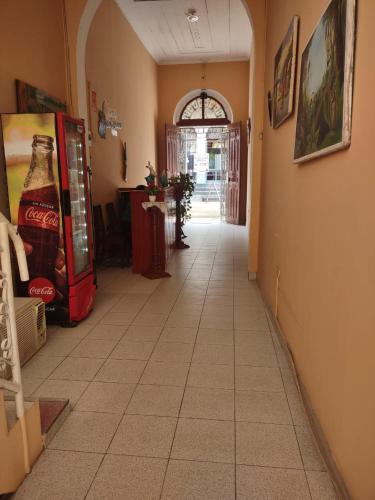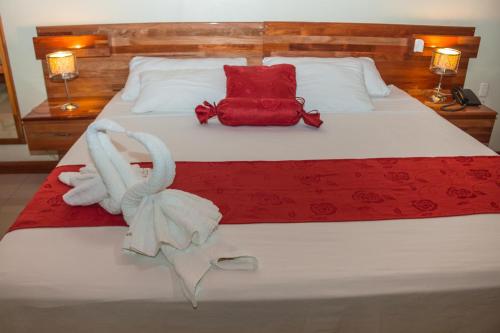Iquitos Tourism
Iquitos (/ɪˈkɪtɒs, iː-, -toʊs/), also known as Iquitos City, is the capital city of Peru's Maynas Province and Loreto Region. The largest metropolis in the Peruvian Amazon, it is the sixth most populous city of Peru. It is known as the "capital of the Peruvian Amazon". The city is located in the Great Plains of the Amazon Basin, surrounded by the Amazon, Nanay and Itaya rivers. Overall, it constitutes Metropolitan Iquitos, a conurbation of 471,993 inhabitants consisting of four districts: Iquitos, Punchana, Belén, and San Juan Bautista. It is the largest city in the world that cannot be reached by road – it is accessible only by river and air. The area was long inhabited by indigenous peoples. The founding date of the European city is uncertain. Spanish historical documents state that it was set up around 1757 as a Spanish Jesuit reduction by the banks of the Nanay River. It was named "San Pablo de Napeanos", and the Jesuits gathered local Napeano (Yameo) and Iquito natives to live here. In the late 19th century, the city became the center of export of rubber production from the Amazon Basin and was the headquarters of the Peruvian Amazon Company. The rubber boom attracted thousands of European traders and workers who amassed wealth with the production and processing of rubber. The city was highly dependent on PAC, controlled in the nation by Peruvian businessman Juan Luis Arana. The operations of his forces in the Basin, who kept indigenous workers in near slavery conditions through use of force and harsh treatment, was investigated by Roger Casement, the British consul-general in Peru. He had investigated conditions in the Congo Free State when under King Leopold's control. His 1913 exposure of abuses of Peruvian workers caused a reaction against the company among the several British members of its board and many stockholders. In addition, rubber was introduced to plantations in Southeast Asia, creating competition that undercut the Peruvian product. With the decline of the rubber industry, many workers and merchants left Iquitos. It was one of the leading cities, along with Manaus, in the huge Amazon rubber boom (1880-1914). During this period, the city was influenced by the numerous Europeans who flocked to it, promoting architecture and cultural institutions from their own traditions. Later in the 20th century, the city and region diversified its economy. The region exported timber, fish and their products, oil, minerals, and agricultural crops. It also derives considerable revenue from tourism and related crafts, as well as bakery, and carbonated drinks and beer. By 1999, the city had consolidated its four municipalities. The architecture and historical treasures reflect the colonial and early 20th-century European period, as well contributing to the attraction of the city as a destination for tourism. It has become a major cosmopolitan city with strong roots in the Amazon, featuring a complex history and cuisine, Amazonian landscapes, a singing accent, a vibrant nightlife, and a growing cultural movement. In 2012, 250,000 visitors were recorded. More have been attracted since the Amazon rainforest was ranked as one of the Seven Natural Wonders of the World. Iquitos inaugurated international flights to the main hub of Panama City in 2012, with shared destinations with Miami and Cancún, and its international airport is expected to become one of six international air centers of Peru. The city was included in the number 6 on the list of "10 leading cities in 2011" of Lonely Planet. The Historic Center of Iquitos has several structures that have been designated as part of the Cultural Heritage of the Nation: the Cathedral of Iquitos, the Iron House, the Old Hotel Palace, Cohen House and more than 70 other buildings. Other landmarks are the Plaza de Armas; Jiron Prospero, an avenue that is the site of several shopping and historical areas; and the lively neighborhood of Belén, often dubbed the "Amazon Venice" for its many waterways. The city is also home to the Amazon Library, one of the two most important in Latin America. The city can be reached only by airplane or boat, with the exception of a road to Nauta, a small town roughly 100 km (62 mi) south (which is not connected to the country's main road network). Ocean vessels of 3,000 to 9,000 tons and 5.5 metres (18 ft) draft can reach Iquitos along the Amazon River from the Atlantic Ocean, 3600 km away. Most people travel within the city via bus, motorcycle, or the ubiquitous auto rickshaw (mototaxi, motocarro or motocar). This is a modified motorcycle with a cabin behind supported by two wheels, seating up to three persons. Transportation to nearby towns often requires a river trip via pequepeque, a small public motorized boat.
WikipediaIquitos in Peru awaits visitors! Discover the attractions, activities and accommodation in Iquitos. Popular vacation packages of Iquitos are of 1-2 days.
Iquitos is an affair to remember, follow this apt itinerary of the place and return home with a bunch of memories.
Iquitos Trip Planner
Plan your customized day by day trip plan for Iquitos. Choose from various experinces categories as adventure, romantic and family and kids friendly for your trip using using Iquitos trip planner.
The best tours and activities in the city, guided by experts to give you a local insight to the best of Iquitos









